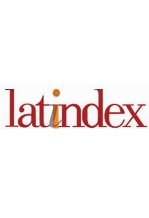MACROECONOMIA DO INVESTIMENTO INDUZIDO E AS TEORIAS DOS CICLOS ECONÔMICOS E DAS CRISES EM KEYNES-MINSKY:UMA ANÁLISE DE COINTEGRAÇÃO APLICADA À ECONOMIA BRASILEIRA PARA 1990 A 2019
Keywords:
Abordagem Pós-keynesiana, ciclos econômicos, Determinantes MacroeconômicosAbstract
The main objective of this article is to discuss and estimate the relationship between Induced Investment (II) and the Gross Domestic Product (GDP) cycle of the Brazilian economy, based on the theoretical foundations of John Maynard Keynes and Hyman Philip Minsky. In addition, the methodology for carrying out the econometric modeling involves the use of unit root and cointegration tests of the Induced Investment and GDP series in Brazil between 1990 and 2019. The results of the econometric models confirm Keynes-Minsky's economic foundations on business cycles. Therefore, it is up to economic agents, especially the government and the business sector, to observe the best method of employing them, in order to guarantee a more effective recovery of the economy, not only focusing on growth speed, but in medium and long term stabilization in order to avoid new outbreaks of crisis in the short term.
Downloads
References
Carvalho, A. C., Carvalho D. F., & Santos C. S. dos (2020). Espacio Abierto: cuaderno venezolano de sociología. ISSN 1315-0006 Volume 29, N⁰ 4 (páginas 139-177).
Carvalho, D. F. (2014). Macroeconomia monetária e financeira da produção capitalista. Belém, PA: ICSA/UFPA. (Livro I, II, III, IV).
Dreizzen, J. (1985). O conceito de fragilidade financeira num contexto inflacionário. Prêmio BNDES de Economia.
Dymski, G., & Pollin, R. (1992). Hyman minsky as the hedgehog: the power of the wall street paradigm. In F., Steven; P., Dimitri (Orgs.), Financial conditions and macroeconomic performance: essays in honor of hyman minsky. Nova Iorque, NY:
M.E.Sharpe.
Enders, W. (1995). Applied econometric time series. New York, EUA: John Willey & Sons.
Engle, R. F. & Granger, C. W. J. (1987). Cointegration and error correction: representation, estimation, and testing. Econometrica, 55(2), 251-276.
Fava, V. L. (2000). Testes de raízes unitárias e Co-integração. In M. A. S., Vasconcelos & D., Alves. Manual de Econometria (pp. 245-252). São Paulo: Atlas.
GIL, Antônio Carlos. (2002). Como elaborar projetos de pesquisa. 4ª Edição, São Paulo: Atlas.
Granger, C. W. J., & Newbold, P. (1974). Spurious regressions in econometrics. Journal of Econometrics, (2), 111-120.
Godley, W., Papadimitriou, D. B., Hanngsen, G., & Zezza, G. (2007). The U.S. economy: is there a way out of the woods? Strategy Analysi (18 pp.).
Greene, W. H. (1997). Econometric Analysis. New Jersey, EUA: Prentice Hall.
Griffiths, W. E., Hill, R. C., & Judge, G. G. (1992). Learning and practicing econometrics. New York, EUA: John Wiley & Sons.
Gujarati, D. N. (2000). Econometria básica. São Paulo, SP: Makron Books of Brazil.
Hatzius, J. (2003). The private sector déficit meets the GSFCI: a financial balances model of the US economic. Global Economics Paper (98).
Johansen, S., & Juselius, K. (1990). Maximum likelihood estimation and inference on cointegration: with aplication to the demand fo money. Oxford Bulletin of Economics and Statistics, (52), 169-210.
Keynes, J. M. (1978). The general theory and after: a supplement. London, NY: Royal Economic Society.
Minsky, H. P. (1994). The financial instabilidade hypothesis: an interpretation of Keynes and an alternative to “standard” theory. In M. H., Philip. Can “it” happen again? essays on instability and finance. Armonk, NY: M. E. Sharpe.
Minsky, H. P. (1982). Can “it” happen again? essays on instability and finance. Armonk, NY: M. E. Sharpe.
Minsky, H. P. (1986). The Evolution of financial institutions and performance of the economy. Journal of Economic Issues, 20(2).
Minsky, H. P. (1996). Uncertainty and the institutional structure of capitalist economies. Journal of Economies Issues, 30(2).
Minsky, H. P. (2008). The Emergence of financial instability in the postwar era: stabilizing na unstable economy. New York, McGraw-Hill. In M. H., Philip, Stabilizing na unstable economy. New York, NY: MacGraw-Hill.
Muth, J. F. (1984). Rational Expectations and the theory of price movements. In R., E. Lucas Jr. & T. J. Sargent (Eds), Rational Expectation and Econometric Practice (Vol. 1). Minnesota, EUA: University of Minnesota.
Nelson, C.R. & Plosser, C.I. (1982). Trends versus random walks in macroeconomic time series: some evidence and implications. Journal of Monetary Economics (10), 139-162.
Phillips, P. C. B., & Steven N. D. (1986). Multiple time series regression with integrated processes. The Review of Economic Studies (53), 473–95.
Silva, Edna Lúcia da & Menezes, Estera Muszkat. (2005). Metodologia da pesquisa e elaboração de dissertação, UFSC, 4 ed. Ver. Atual. Florianópolis..
Stock, J. H. & Watson, M. W. (2004). Econometria. São Paulo, SP: AddisonWesley.
Vasconcelos, M. A. S. & Alves, D. (2000). Manual de econometria. São Paulo, SP: Atlas.
Wooldridge, J. M. (2006). Introdução à econometria: uma abordagem moderna. São Paulo, SP: Pioneira.
Downloads
Published
How to Cite
Issue
Section
License
Copyright (c) 2023 André Cutrim Carvalho, David Ferreira Carvalho, Irvyem Gabriel Santos Monteiro

This work is licensed under a Creative Commons Attribution-NonCommercial 4.0 International License.
The copyright of papers published in the Revista de Economia Mackenzie belongs to the authors, who grant to the Mackenzie Presbyterian University the exclusive rights to publish the content. Total or partial reproduction is prohibited without due authorization of the Editorial Committee, except when it is previously authorized.










